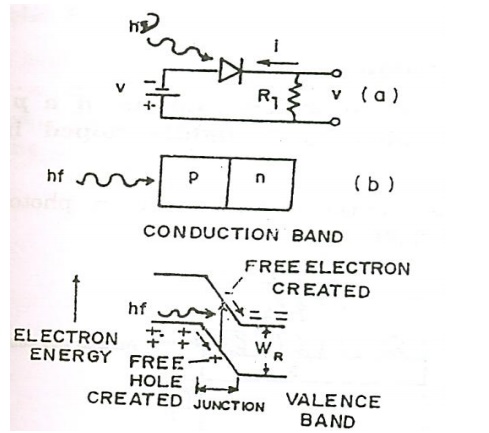Chapter: Physics : Photonics and fibre Optics
Principle of operation of a Photo Detector
DETECTOR:
A detector is one which converts photons into electrons
A detector is one which converts light into either current or voltage.
PRINCIPLE OF OPERATION of a Photo Detector
A photodiode is a PN junction or PIN structure. When a Photon of sufficient energy strikes the diode, it excites an electron, thereby creating a free electron and a hole.
If the absorption occurs in the junction's depletion region, these carriers are swept from the junction by the built-in field of the depletion region. Thus holes move towards the anode, and electrons toward the cathode, and a photocurrent is produced.
Definition:
It is a device which converts light signal to electrical wave forms. Types of photo detectors:
There are three types of Photo-detectors
i. Photo emissive
ii. Photo conductive
iii. Photo voltaic
Photo voltaic devices:
We will study the three forms of devices.
i. PN junction photo detector
ii. PIN photo diode
iii. Avalanche photo diode(APD)
Figure explains the basic detection mechanism of PN junction diode photo detector. When reverse biased, the potential barrier between p and n regions increases. Therefore no current flows.

Figure shows an incident photons being absorbed in the junction after passing through the p layer. The light photons incident on the junction produce large number of electron ‚Äď hole pairs. The electrons are attracted towards n region and holes are attracted towards p-region due to reverse bias of the diode. Thus the current passes through the external resistor.
The current through the load depends upon on the intensity of the light incident on the diode.
The absorbed energy raises a bound electron across the band gap.
Related Topics